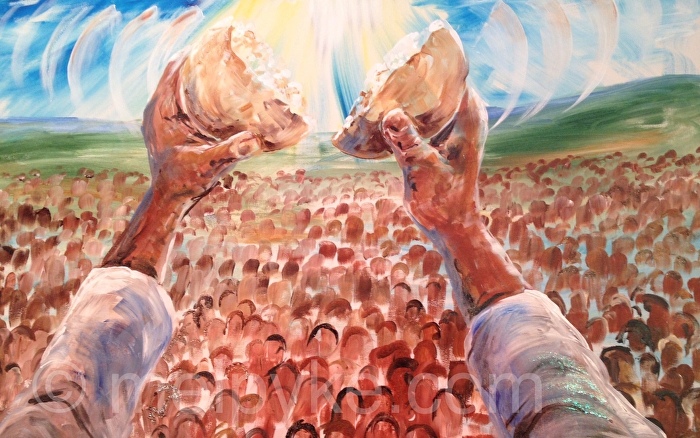
(For the audio version of this blog, please visit: http://brothersinchristcmf.org/wp-content/uploads/2023/06/Mass-Blog-for-the-Solemnity-of-the-Body-and-Blood-of-Christ-2023-1.mp3)
This is the central question for anyone trying to understand the solemnity of Christ’s body and blood. But trying to answer it unwisely can soon get silly. “Am I eating a piece of his hand or his foot? And is it the same hand and foot being fed to people at other churches around the world?”
The question of the nature of Christ’s body and blood deserves prayerful contemplation. Let’s get down to the gospel truth.
In Sunday’s gospel reading (Jn 6:51-58) Jesus tells us his flesh is true food, and his blood true drink.
“Whoever eats my flesh and drinks my blood remains in me and I in him.”
WE are the key to understanding the body and blood of Christ. These elements of Christ are as much one in him as we who consume it are one with him. As Paul taught the Corinthians in the letter we read this Sunday (1 Cor 10:16-17),
Because the loaf of bread is one, we, though many, are one body, for we all partake of the one loaf.
Thomas Aquinas expresses the beauty of this co-relationship in his “Lauda Sion,” one of four Eucharistic hymns he wrote, and which is featured in this Sunday’s beautiful liturgy. It answers our headlined question by explaining how thousands can receive that one body:
Thousands are, as one, receivers,
One, as thousands of believers,
Eats of him who cannot waste.
No waste? But anything can happen during the transfer between giver and receiver. As a Eucharistic minister I come face to face with dozens of souls reaching for this spiritual food. Some are hungrier than others. Some receive it in their right hand, others their left, others on their tongue while holding their baby or others holding one hand out while grasping the hand of their toddler who came along to witness this exchange. But not every one of these recipients answers “Amen” when “the body of Christ” is stated for their affirmation. They may forget, or try taking their “turn” quickly in courtesy to the next recipient, or they may just be unaware that their affirmation is even being sought.
And, heaven forbid, what if the priest, minister or recipient drops the Eucharist before that response can be given?
Father William P. Saunders, pastor of St. Agnes Church in Arlington, Va., and curator of Catholic Straight Answers online, offers the following protocol:
Most communion accidents occur because the person begins walking back toward the pew, looking ahead, rather than focusing on receiving our Lord. Better to pause to receive, adore, and consume the Sacred Host, than to rush like in a cafeteria line and risk dropping it. No one should be facing the pews or walking back to the pews when receiving Holy Communion. Unfortunately, in many parishes, the distribution of Holy Communion has been turned into a fast-paced assembly line rather than allowing a person to commune with the Lord received in this precious Sacrament.
If the host is dropped, the distributor is to consume it and make sure not a crumb is left on the floor.
But our Christ is not crummy, and neither are those who receive him with an open heart, for as Aquinas states,
Whoso of this food partakes,
Does not rend the Lord nor breaks;
Christ is whole to all that taste.
It is up to us not only to receive, but to TASTE the Eucharist, just as it is up to us not only to hear but to embrace gospel truths—like those we hear in John’s gospel this Sunday. In addition to the truth of our being one with Christ’s body, there’s the one about our unity with his soul:
Just as the living Father sent me, and I have life because of the Father, so also the one who feeds on me will have life because of me.
That life prepared for us is delicious and has an eternal aftertaste.
–Tom Andel